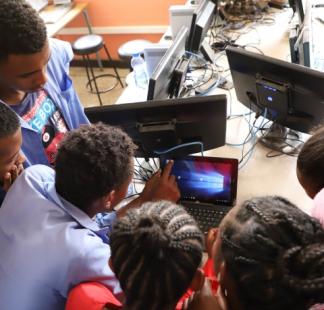- Roxana WIDMER-ILIESCU
Introductory
Event Organizer(s)


Description
One of the many barriers that persons with disabilities face in accessing employment opportunities is that many career sites and job portals do not contain accessible digital content and have not been designed and developed with ICT accessibility requirements in mind. Employers committed to inclusive employment need to be aware of this. Guaranteeing that job portals meet the necessary accessibility requirements is critical for persons with disabilities to enter and thrive in the labour market.
This training course is designed for all stakeholders (including public and private sector, academia, civil society, international organizations, etc), specifically individuals involved in the recruitment process of their organizations and maintenance of their job portals, who wish to enhance their knowledge on the topic of ICT Accessibility and develop their understanding of how accessibility requirements and standards and the principles of universal design are fundamental in the process of building inclusive online job applications and recruitment systems. To ensure inclusive learning, this online self-paced training course has been designed and developed in digitally accessible formats and is, therefore, accessible to all people, including persons with disabilities, such as blind persons or persons with visual disabilities, deaf persons and/or persons with hearing impairments.
No prior knowledge or qualification in is required. However, for interested learners, two courses could serve as appropriate introduction to the general concepts related to the topic of ICT Accessibility:
ICT Accessibility - The key to inclusive communication
Web Accessibility - The cornerstone of digital society
Upon completion of this course, learners will:
- Understand the key role of ICT/digital accessibility to ensure the principle of “leaving no one behind” is appropriately applied to recruitment processes.
- Understand how accessibility requirements and standards and the principles of universal design are fundamental in the process of building inclusive online job applications and recruitment systems.
- Identify the main obstacles that persons with disabilities face in online job applications and how to provide solutions
This self-paced training course is designed to be inclusive for everyone interested in the subject matter and is therefore accessible by all persons including those with disabilities. The training is delivered through a player which supports several accessibility features. All text is read out by a state-of-the art text to speech engine, volume can be adjusted, and closed captions are available. The course player works with JAWS 16 and later, NVDA, VoiceOver and TalkBack screen readers in a range of browsers. At the end of each module, and before moving on to the next, the learner will take a quiz based on the training content.
Participants performance in this course will be determined using self-assessment quizzes at the end of each module. Each question must be answered correctly before moving on to the next. Participants can take the quizzes as many times as possible. A score of 80 per cent (80%) is required to obtain an ITU badge. Upon successful completion of the online self-paced training course participants will obtain the ITU Academy badge.
The topics covered in this self-paced online training are:
Module 1: Introduction to accessibility of online job application and recruitment systems. Module one helps to set the context of the training course. It provides information on how digital transformation has changed the recruitment processes worldwide and how this has affected people with disabilities who generally face barriers as online applications and recruitment systems lack accessibility and usability. It also explains the benefits of labour inclusion for organizations and companies and briefly introduces the solution: the implementation of accessibility and usability strategies according to Universal Design and Web Accessibility standards.
Module 2: Implementing web accessibility standards and recommendations. Module two deepens the understanding of what digital accessibility is and how it is implemented. It explains how some persons with disabilities access the digital world have using Assistive Technologies (AT) and provides an overview of the common barriers that persons with disabilities face in the digital world and will help all stakeholders understand how web accessibility helps overcoming those barriers. Module two also provides all stakeholders specific resources and recommendations to set an accessibility policy to achieve inclusive online job applications and recruitment systems.
Module 3: Accessibility of online job application platforms: best practices and recommendations Module three focuses on the specific barriers potential users face when interacting with online job applications and recruitment systems. It provides specific recommendations on how to make those platforms inclusive to all with concrete examples on the implementation of accessibility standards and recommendations as well as usability best practices.











